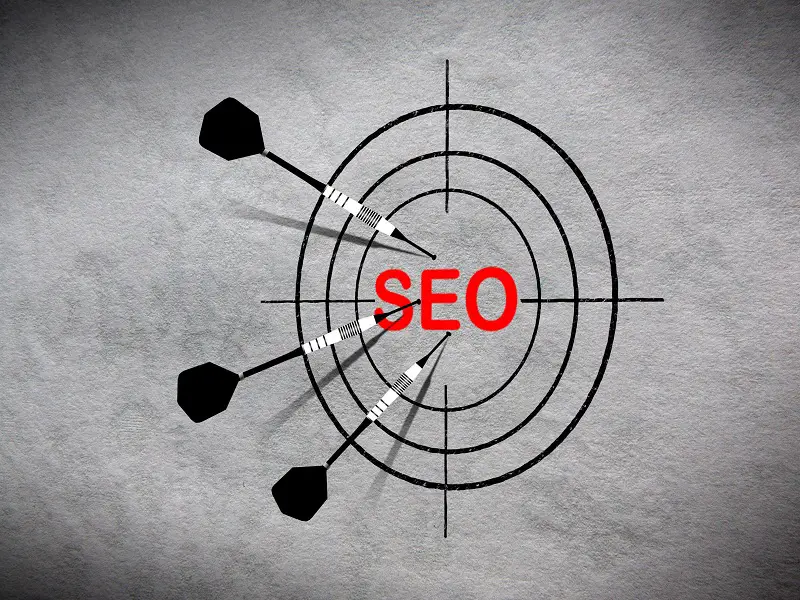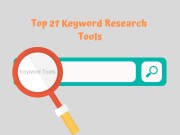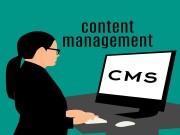On-Page SEO Checklist: Everything You Need To Know

Search Engine Optimization (SEO) is basically where we construct the web pages and apply our technique process that helps in getting the ranking as towering as possible on the search engine result page (SERP). High ranks obviously mean getting more and more traffic on your content page. It is generally split into two discrete classifications:
On-Page SEO Checklist
On-Page SEO refers to everything that one can implement ON their website that aids in higher search rankings. It is a kind of optimization that benefits basically to get the search engine to give high rankings on the result list, may it be any kind of word or data included in the data.
It also plays a chief role in usability and search engine positioning too.
What are ON-PAGE Factors? How ON-PAGE Factors Improve The Ranking?
On-page factors are directly proportional to the ability of one's page to get better rank only if it is optimized properly. The crucial on-page factors that have a big impact on the search engine's ranking are:
1. Keyword Optimization: It is an act of researching, then analyzing and afterward selecting the best suitable keyword so as to target a specific traffic from the search engine results onto to your website. If the key target words are not selected appropriately, all the proceeding work an effort wouldn't pay off.
2. Meta Tag Optimization: Meta tags illustrate the content of a page. We all are familiar with tags from blog sites; Meta tags are almost alike, they just help in telling search engines that what their website page is about. Blog site tags can be seen whereas meta tags are only existing in the HTML coding. These are only evident to the search engine. These are of certain use if for those who are willing to give a prime title for the user but want the data or information to be simple for SEO purpose.
3. Navigation Links Optimization
- These can be achieved by designing better website menus for users
- Easy to understand the structure
- Mobile Friendly
- Secondary menus
All these tricks and implementations would result in a better navigational view.
4. Breadcrumb Optimization
- They simplify the user's capability in order to understand the website's layout.
- They are totally non-compulsory.
- They permit users to examine throughout the website and to sight further content at a quicker pace.
- They’re simple to apply and can be understood despite a user’s tutoring, professional backdrop or technical familiarity.
6. Header Tag Optimization: Header tag or the <h1> tag in HTML coding is generally the title of the content post. It is commonly the biggest text which seems to stand out. There are more similar header tags viz. h2, h3, h4 and so on. Each one can have a less significant amount of significance on the site.
7. Image Optimization: Several ways to get the best optimistic image are briefly decrypted below:
- Image Relevance: The image should be quite relevant as it the most key factor in optimizing an image.
- Alt Tag: Alt stands for "alternative". Majority search engines are textually based, i.e. they cannot exceed an image or a video. The site of the image appears as an unfilled space to the search engines. These blank spaces aren’t good for SEO purpose. Alt tags let know the search engines that an image is located here, but also tells about the corresponding theme of the image sighted.
8. Internal Link Optimization: These are the links that travel from one page to another page on the similar domain.
- They give an allowance to the users in order to have a navigation of the site.
- They aid in establishing the information ladder for a website.
- They also provide help in spreading link equity.
9. Outbound Link Optimization: These links are the ones that point towards some different domain from our website.
- They provide an understandable design regarding the blog or content because of the relevancy of the links.
- Also, they provide the most excellent way always stay in touch or put up a relation with bloggers of the identical niche.
- A good website with relevant links will enlist each of the essential and famous websites in our niche.
10. Optimizing Long Content: Essential things to be kept in mind while going through a Long Content:
- We should go through each keyword and give attention to the page of the site that correlates to that specific word
- We should be specific regarding the fact that the keyword appears in numerous locations on the page
- Do not overpopulate a keyword as it would lead to a lower ranking.
11. HTML/Content Ratio: As we know that the coding of a website's page is done in HTML format whereas the data is shown generally in a textual form. This HTML to Content ratio is the link between the percentages of real textual content seen on a website's page.
11. Blog Optimization: Blogging is an essential part of content marketing. That is the reason for its prior importance for SEO.
There are 2 ways to get an optimized blog.
- Writing a fresh blog content
- Optimizing pre-existing posts to achieve better ranks
12. Making Bold and Italic on particular keyword: Making Bold and Italic on a specific word and phrases does not essentially facilitate or damage your SEO. Search engines spiders are strategic minute creatures that make out accurately what they look for and are not influenced by bold text, large text or attractive text form.
13. Deploying Social Media Meta Tags: Sharing a creation on social networks is now a day's one of the most honored way to hike a user-base. They offer the substance presented on social networks each time our product's URL is shared.
- A title, description or an image shall all be arranged with care and concern.
- The correct content includes optimized images and posts that have facilitate in spreading the share rate, indirectly improving SEO.
14. Responsive Website for Multiple Devices: Responsive design for a site is a system in which the server for all time sends the similar HTML codes to every device. Algorithms made by Google should be capable to involuntarily notice this arrangement if the entire Googlebot user agents are permitted to creep the site and its aspects.
15. Improving Page Quality: Addition of images and videos confirm the content’s value. Google does not just go through textual matter but also confirms and rechecks relevancy of a site's page. That means, it checks other media forms too. A combination of text, image, and video assist to prove Google that our content is diverse and helpful.
16. Site readability and accessibility to visitors: Certain precautions that can be taken into account are:
- Content should be sensible
- Content should be properly aligned in a similar format
- Usage of plain language should be preferred
- Heading should always be larger than normal text.
17. Canonical URL Optimization: A canonical tag states the foundation of a URL to any search engine such as Bling, Yahoo or Google. These are used to announce a solo page as its individual source or for duplicate contents to referrer to their original source.
18. SEO Friendly URL Optimization: One of the foremost inclusions of a standard search engine optimization method is in having a use of SEO-friendly URL arrangements. An excellent arrangement can facilitate the indexation procedure of our site, but; unluckily, there are ample sites that make use of wrong URLs.
19. Hreflang Tag Optimization: The hreflang characteristic indicates Google about the language we are implementing on a certain site or page, hence that search engine can provide that answer to users probing in that particular language.
20. XML and Html Sitemap optimization: Sitemaps appear in 2 flavors: HTML and XML. Each one has diverse uses as well as values for SEO. HTML sitemaps being mostly planned to aid guide shoppers whereas, XML sitemaps are to make sure that search engine users can index the URLs given on a website. Both of these sitemaps has matchless strengths and limitations when related to SEO.
21. Robots.txt Optimization: Robots.txt is a textual file that web designers generate to inculcate web robots for crawling the pages on a website. In use, the robots.txt file indicates whether particular users should be allowed to crawl a website or not.
22. Broken Link Optimization: 404 errors or a broken page link would surely affect the ranks of a website as Google does not want to deliver low-quality websites to its users or searchers. Removal of these unwanted errors or broken links is an essential step.
23. Minimizing HTTP request: “Minification” refers to the removal of any unwanted attributes, such as comments, format, white spaces and new lines from the HTML or another such coding which are not required for full execution.
24. Reducing Bounce Rate: One of the components which are well thought-out when evaluating the efficiency of a site is its bounce rate. Improvement in our bounce rate by its reduction will result in increased interaction with our website and can lead to further conversions.
25. Boost Dwell Time on your Website: Dwell time is a foremost parameter. It is the real length of the time a crawler usually spends on a webpage before going back to the SERPs.
26. Improving CTR and Page Views: Definition of a good CTR can vary greatly, and it usually dependent upon the platform. These values are different for different successful sites. It is such a parameter in which your toughest opponent is you yourself.
27. 301 Redirection Optimization: 301 redirect: It is unending redirects that pass in between 90% to 99% of ranking power. In most cases, this redirect is the topmost technique for the implementation of redirects upon a site.
28. W3c Validation Error: W3C means Wide Web Consortium, which is an organization that creates certain standards for coding on the website. On the page, it seems to be an advantageous thing for SEO.
29. Improving Site Page Speed: Page speed is the load time that a page takes to fully shown the whole content. We can get it evaluated from Google's page speed tool.
30. Google+ rel Author Optimization: The ‘rel author=’ characteristic is used in order to relate yourself to the whole of our work. This aids in helping regarding the content stealing issues.
31. HTTPS Upgradation: Https is the up-coming future of the internet. It will be protecting our website from burglars, also it will keep safe our data resulting in much beneficial and better SEO
32. Minifying Resources: This rule upsurges the page speed insights as well as measures the size of the sources that can be decreased by the aid of minification. It is the process of eliminating unwanted data without having any impact on other sources.
33. Reduce Page Size Less Than 50 kb: Photos and videos add most of the content size and result in increased page size, such heavier pages can be achieved by using photos less than 20 or 30 kb in order to have a proper below 50 kb web page
34. Reduce Ajax and Iframes codes on site: Iframes gives one a way in order to embed the content from some other site into our own site. Search engines identify the contents in iframe codes as approaching from some other source.
35. Cache Optimization: Page caching is also a technique that can facilitate improving the load time in relation to the website page. A bad page load time can lead to a 20% reduction in overall website traffic.
36. Fixing Duplicate Content: Duplicate content is regarded to the content that comes into view on the net at several sites. Duplicate content usage can lead to a reduction in rankings, so it is preferred to use original and unique content in order to have better consequences.
37. Schema Optimization: Schema or often called as Schema.org is a semantic terminology of tags or data that one can get in addition to their HTML coding so that they can have a better SEO.
38. Implement RSS Feed on Your Site: RSS feed items will not directly upsurge the ranks, but will increase the amount of traffic which will indirectly facilitate in better SEO.
39. Favicon Optimization: Favicons are the graphical parts that depict on tabs of a browser, bookmarks list, search histories or even the search results. There are a various tool that is used for its optimization
40. Reduce Domain Score: Domain score can be decreased by reducing the so-called spam score which is an analysis developed using the massive index.
41. Hosting Upgradation: An upgradation in the hosting form is achieved by site speed which is a great and important factor revolving around SEO and the rankings involved in this process. A slow website clearly means a huge bounce rate as well as no actual value.
42. Fixing Site UI/UX: UX is indirectly an integral form of SEO. It is one of those key factors that can result in a better-optimized SEO. It involves the outlook of a website, and a great surfing can make the user visit it again and again
43. Browser Compatibility: The content uploaded on a website should be compatible for all the visitors, and they should not get involved in installing a browser every time they visit a site. The compatibility should be made in right terms.
44. Site Structure Optimization: A good site structure would upsurge the chances of getting better ranking values while Google provides the search results. The structure should be highly organized with streamlined content
45. Add Social Media Share Buttons: Addition of sharing buttons can be beneficial in some ways such as:
These buttons make people think that it is a viral thing to watch for
More of the natural links is increased in this way
46. Check Your IP Address is Blacklisted: It is always beneficial to check the blacklisting of a website for better SEO's. When a spam gets on a site, its IP address also gets in the blacklist for security purpose. This is because some other virus or span cannot affect it anymore. Online tools are available to check it.
47. Webmaster Integration: Google offers their webmaster tool that is crucial for integration purpose. It facilitates a lot of SEO sights.
48. Google Analytics Integration: It is also another tool from Google Analytics which is available for free. It is of versatile nature and is very and simple to use. It will lead in maximizing the efficiency of the SEO campaign
49. Page Rendering Identification: To get better rankings, the most vital content should be availed in HTML textual format. The main reason for this is that some search engines crawl behind to take other forms into consideration.
50. Cleanup Popup Appearing On Your Website:
- Pop up ads would not themselves go.
- The homepage of our browser automatically changes
- Unnecessary extensions always add up
This kind of things tell us that the right time to clear up the pop-ups is right now which provides a much safer side
51. Restore Hacked Website Into Normal: Online hackers in this e-commerce valley get into hacking a website so they can get their data by stealing it. It is always wanted to get the site recovered to normal as soon as possible from the experts that deal with this.





